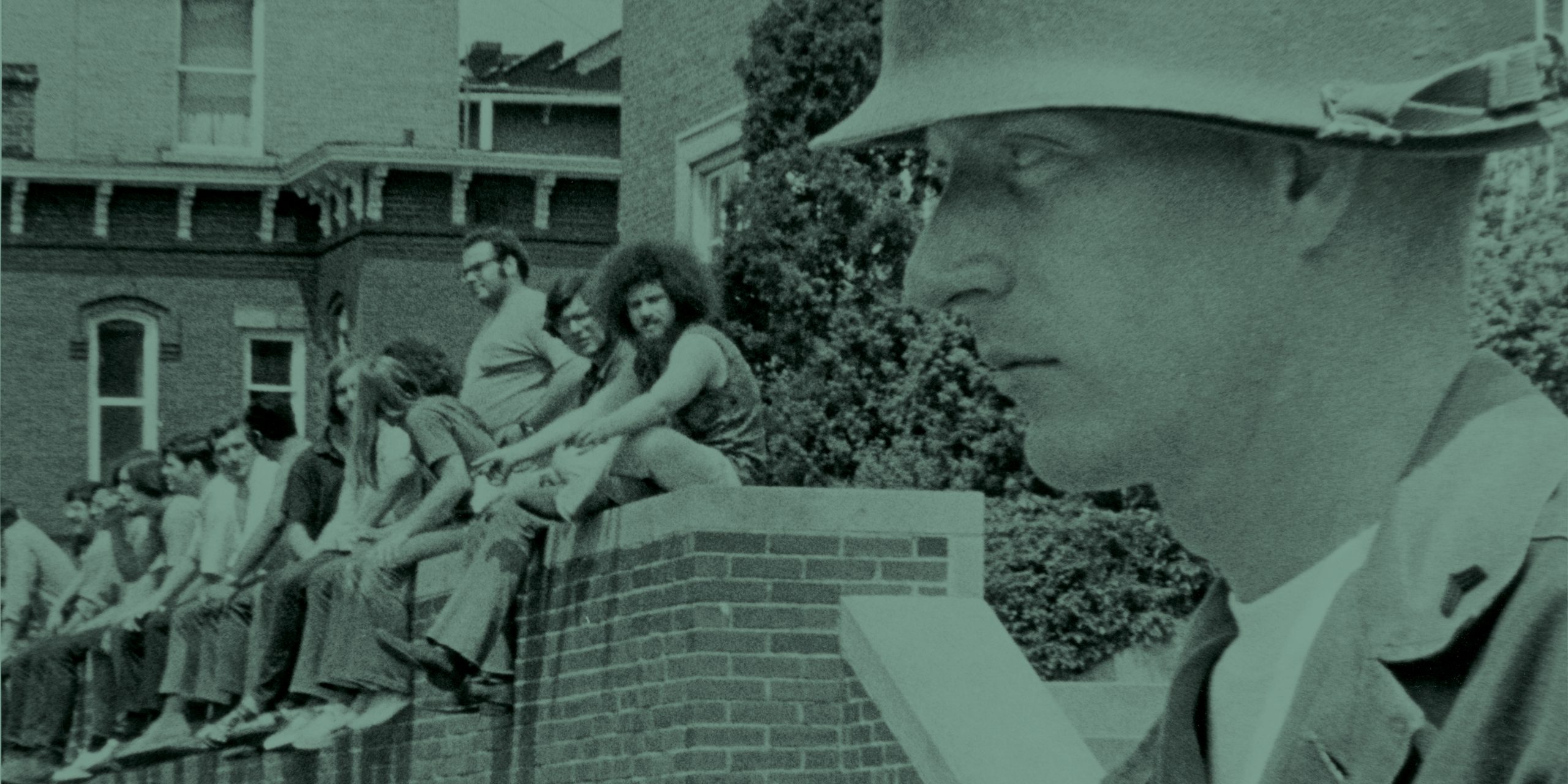
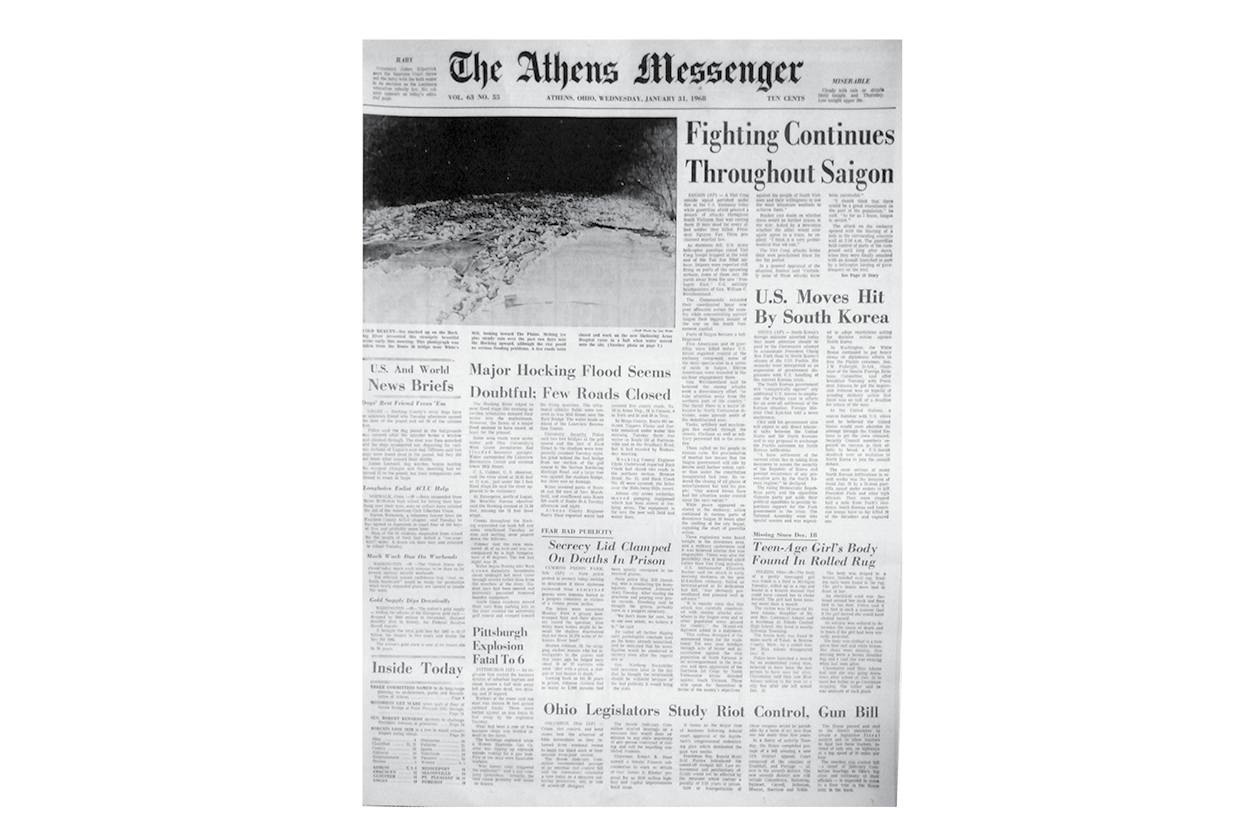
1968 | January 30
Tet Offensive
North Vietnam launches a coordinated country-wide attack on more than 100 towns and cities on the Tet holiday, the Vietnamese New Year. The surprise stunned the U.S. military and the public, which had been led to believe the North Vietnamese were being defeated, fueling further anti-war sentiment.
PHOTO COURTESY OF THE ATHENS MESSENGER
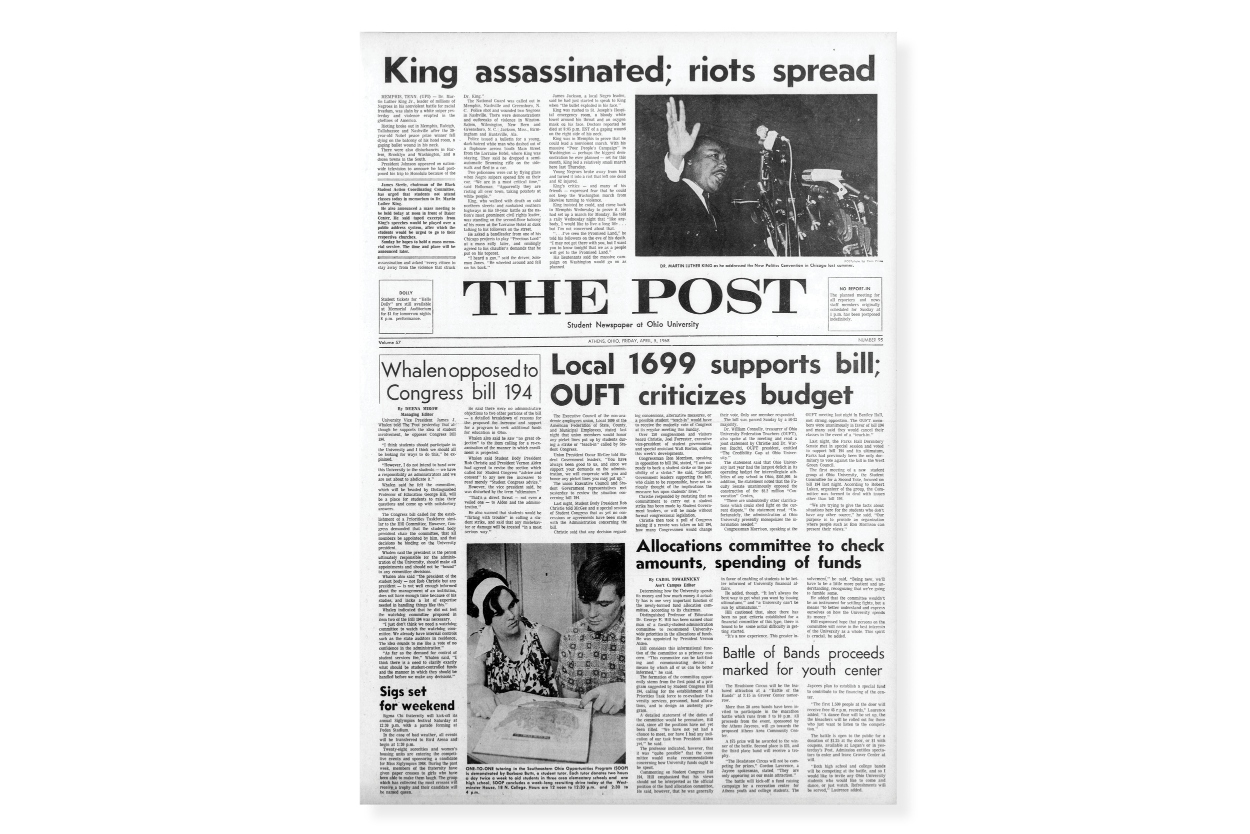
1968 | April 4
Dr. Martin Luther King, Jr. assassinated
The civil rights leader is assassinated in Memphis, Tennessee. The Civil Rights Act of 1968, which had largely stalled in Congress, is quickly passed and signed into law just one week later.
PHOTO COURTESY OF THE MAHN ARCHIVES &; SPECIAL COLLECTIONS
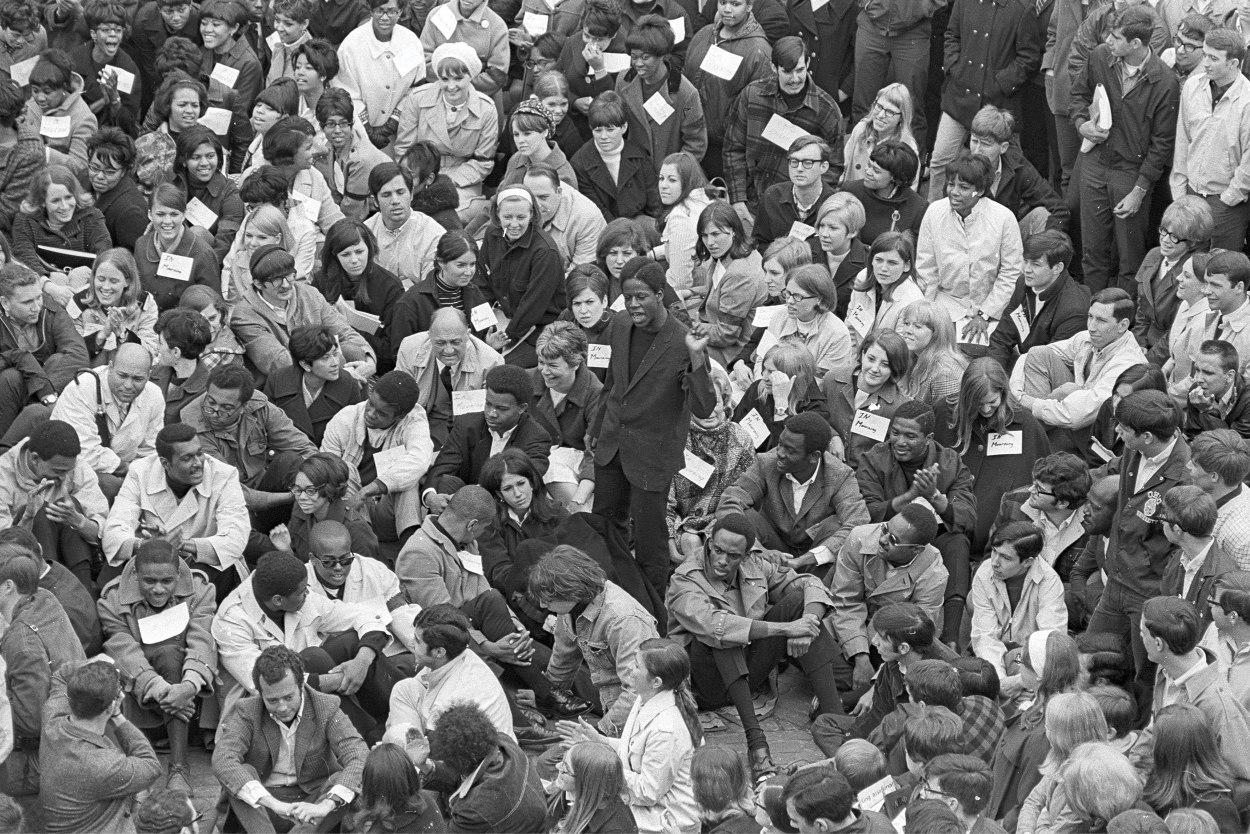
1968 | April 7
National Day of Mourning
Ohio University observes the National Day of Mourning for Dr. Martin Luther King, Jr., with President Alden addressing the OHIO community at a mass meeting, after which an estimated 200 students and faculty members stage a sit-in at Court and Union Streets.
PHOTO COURTESY OF THE MAHN ARCHIVES & SPECIAL COLLECTIONS
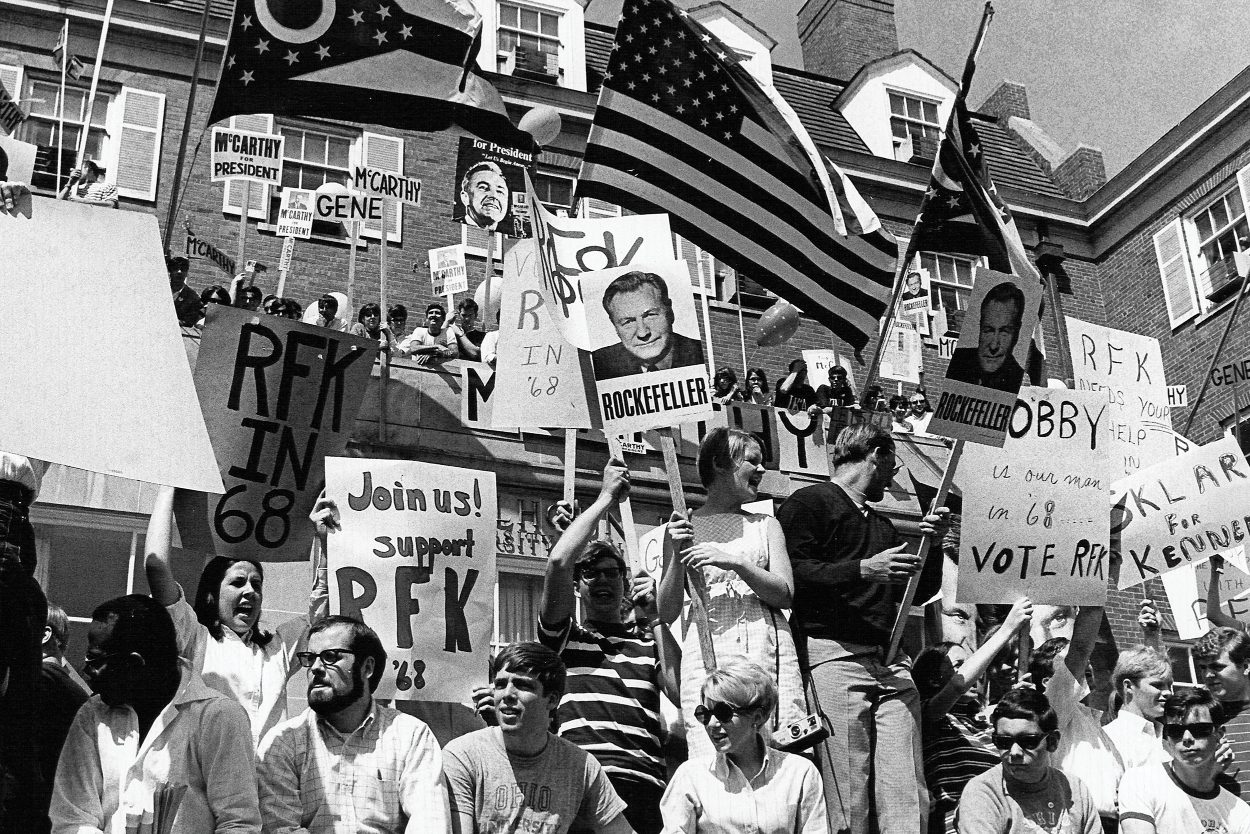
1968 | June 5
Robert F. Kennedy assassinated
On the night of the California primary as he was leaving the Ambassador Hotel in Los Angeles after addressing a crowd of supporters, U.S. Sen. Robert F. Kennedy is fatally shot by Sirhan Sirhan. Kennedy had won the primary, putting him in reach of securing the Democratic presidential nomination.
PHOTO COURTESY OF THE MAHN ARCHIVES & SPECIAL COLLECTIONS
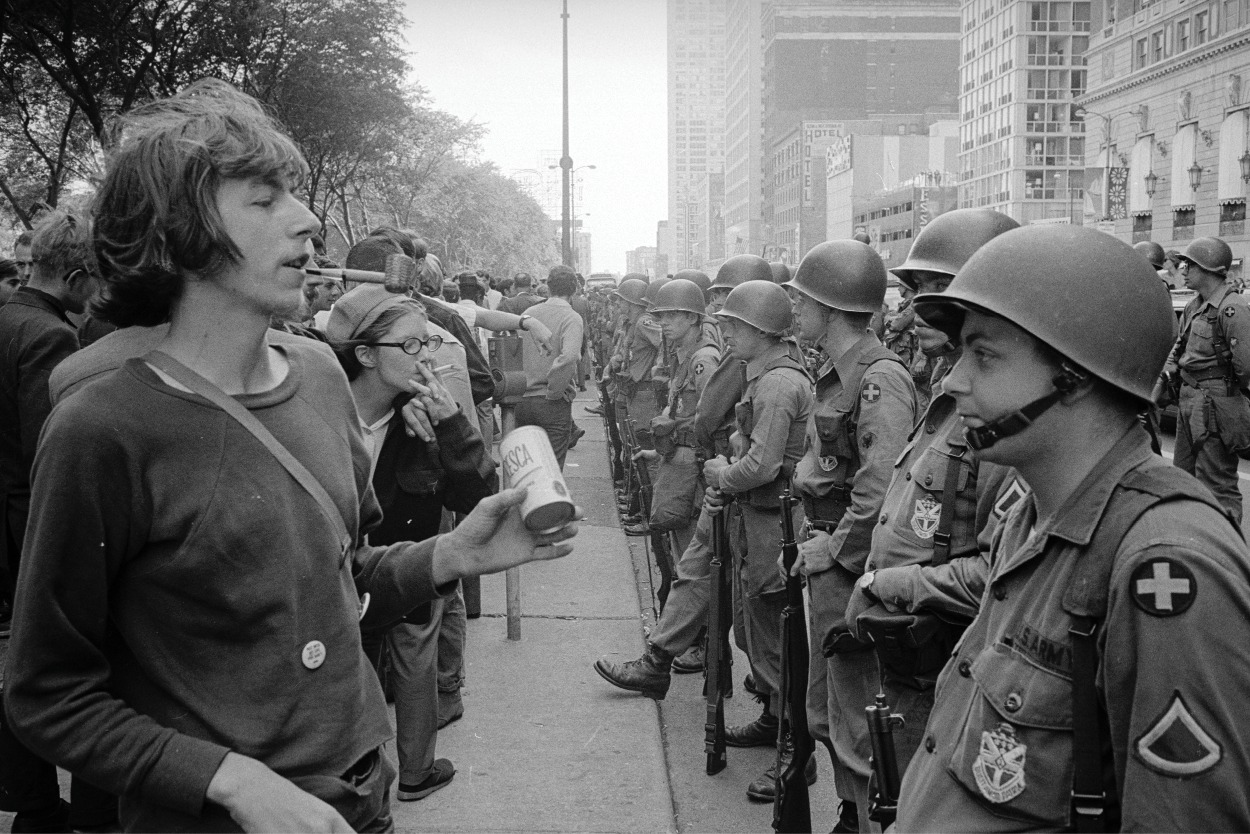
1968 | August 26-29
Chicago Democratic National Convention
Thousands of students, anti-war activists and other demonstrators clash with police during the Democratic National Convention in Chicago.
PHOTO WARREN K. LEFFLER/LIBRARY OF CONGRESS
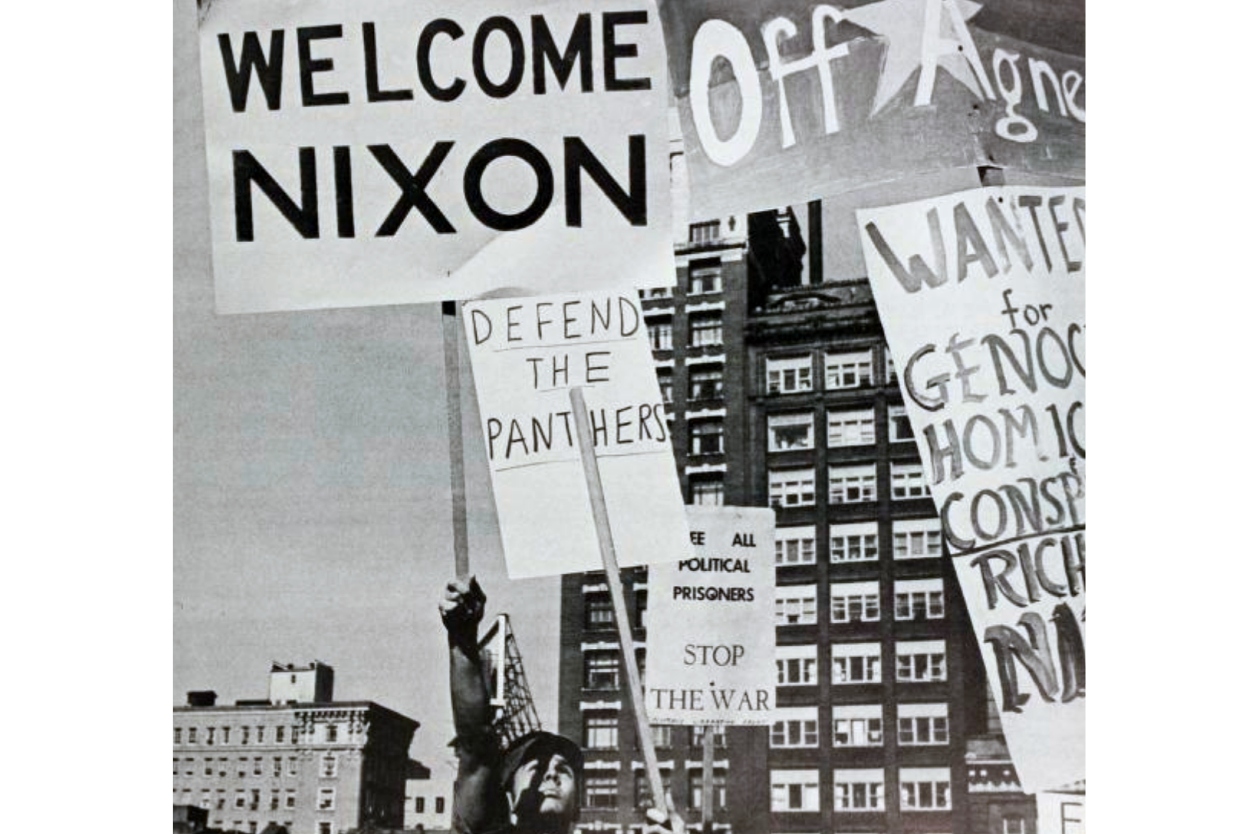
1968 | November 5
Nixon Elected
Running on promises to end the Vietnam War, Richard Nixon defeats Hubert Humphrey and George Wallace to become the 37th president of the United States.
PHOTO COURTESY OF THE MAHN ARCHIVES & SPECIAL COLLECTIONS
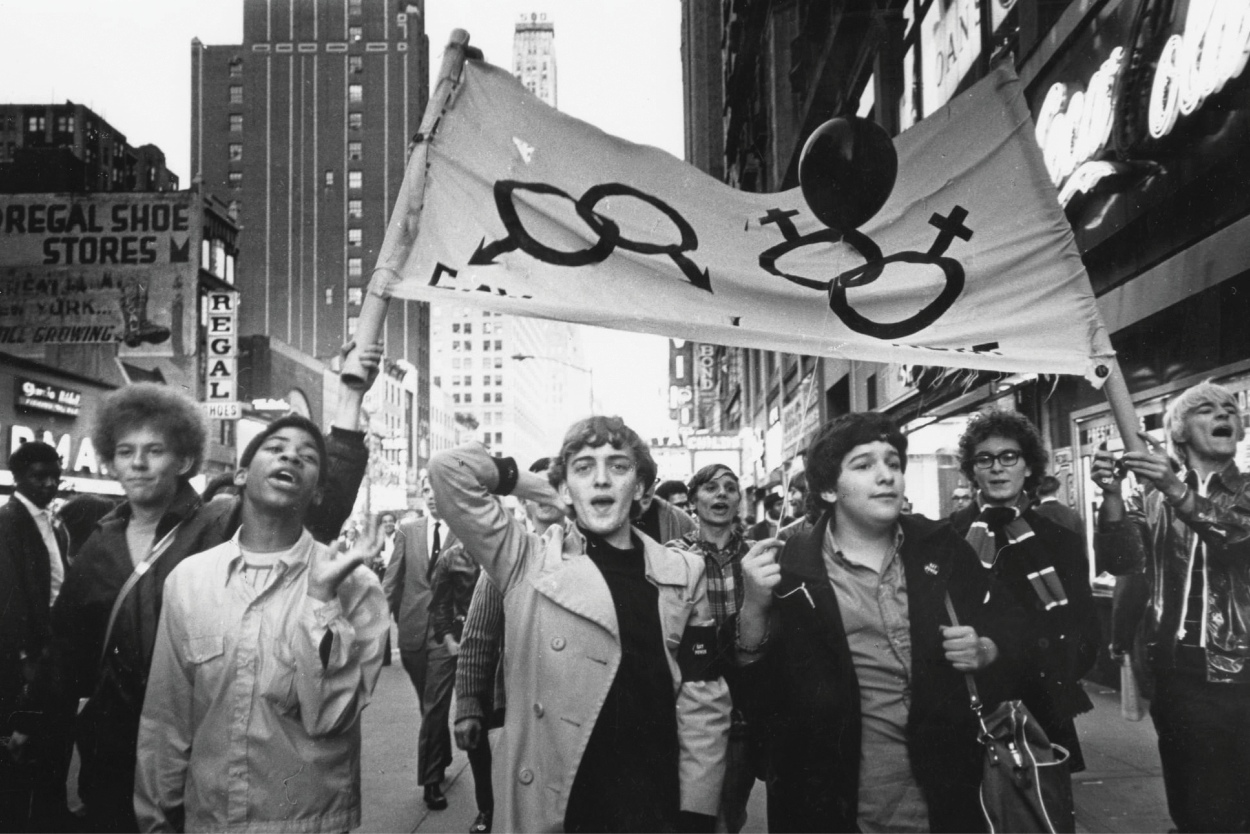
1969 | June 28
Stonewall Uprising
As was common practice at the time, police raid the Stonewall Inn, a gay bar in New York City’s Greenwich Village. Bar patrons and area residents fight back, leading to six days of protests and clashes with law enforcement and giving birth to the modern-day LGBTQ rights movement in the U.S.
PHOTO DIANA DAVIS/THE NEW YORK PUBLIC LIBRARY
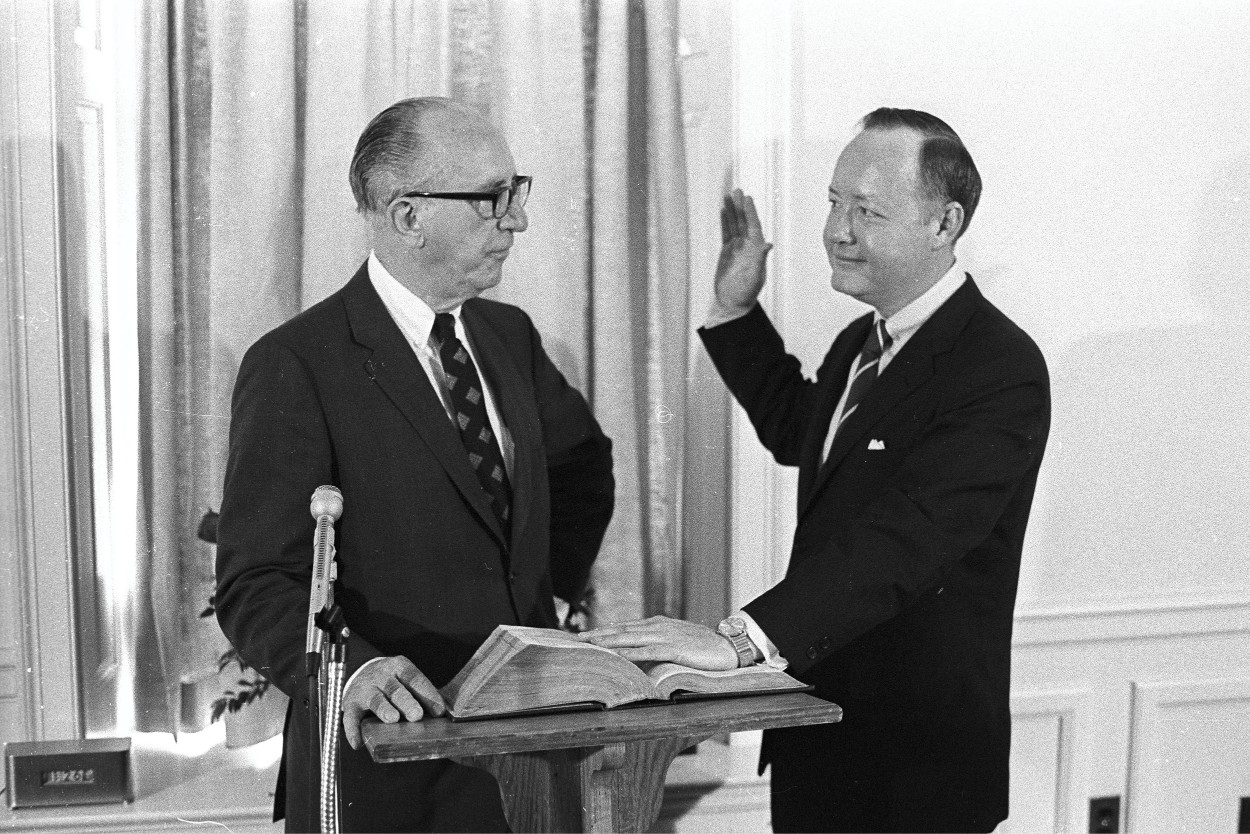
1969 | August 1
Sowle becomes OHIO president
Claude Sowle is inaugurated as OHIO’s 16th president at the age of 40.
PHOTO COURTESY OF THE MAHN ARCHIVES & SPECIAL COLLECTIONS
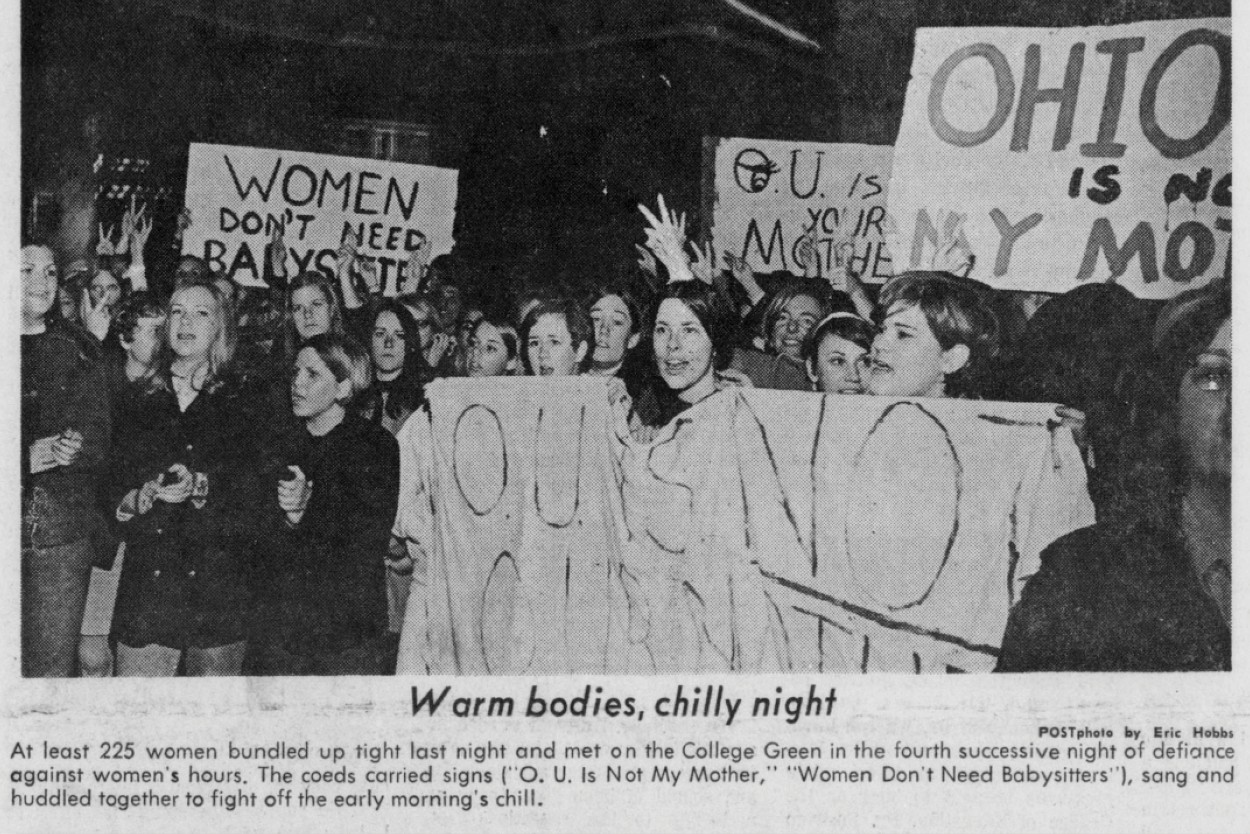
1969 | September 5
Curfew restrictions eased
The OHIO Board of Trustees, at President Sowle’s recommendation, eliminates nightly curfews for sophomore women and those 21 and over.
PHOTO COURTESY OF THE MAHN ARCHIVES & SPECIAL COLLECTIONS
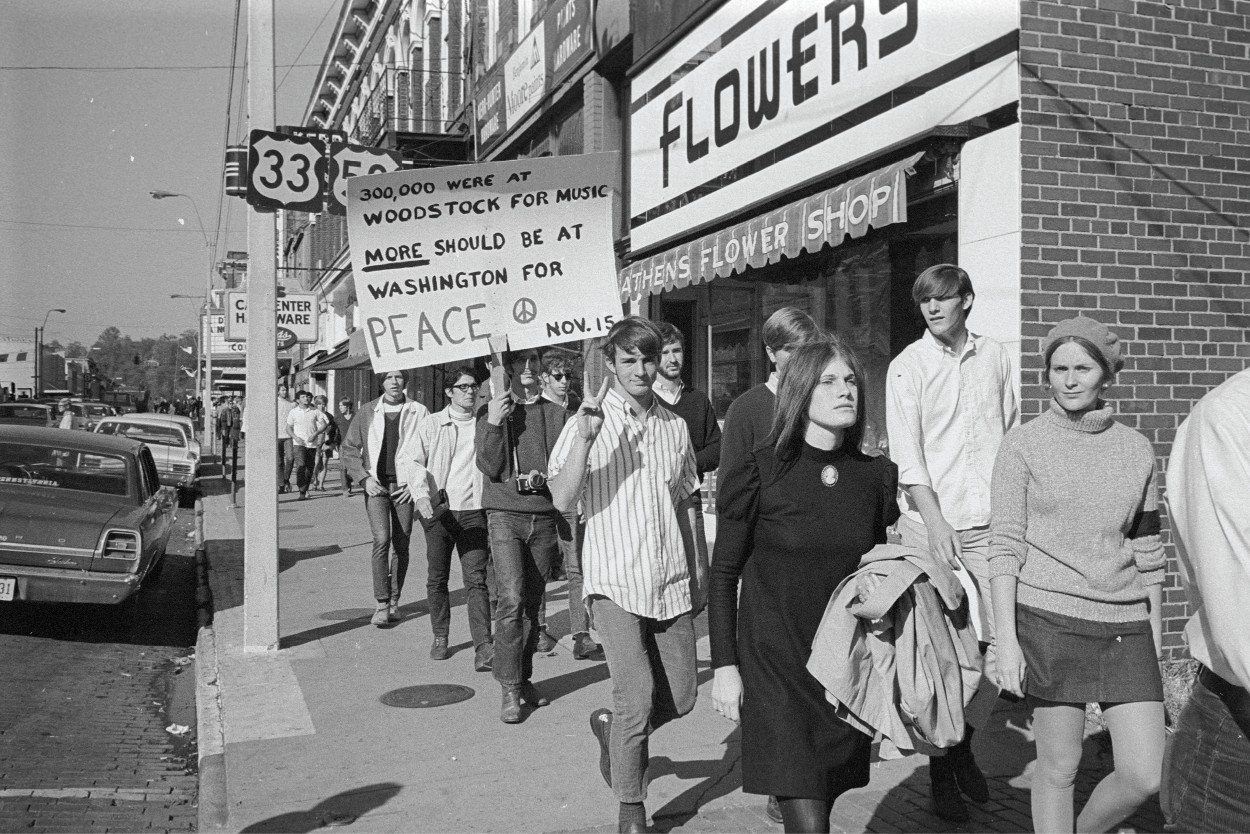
1969 | November 15
The Moratorium March
Roughly 500,000 people march in Washington, D.C., in the largest anti-war protest in U.S. history. Many OHIO students who remained on campus participated in a vigil and a march in Athens.
PHOTO COURTESY OF PETER GOSS PHOTOGRAPHY COLLECTION/THE MAHN ARCHIVES & SPECIAL COLLECTIONS
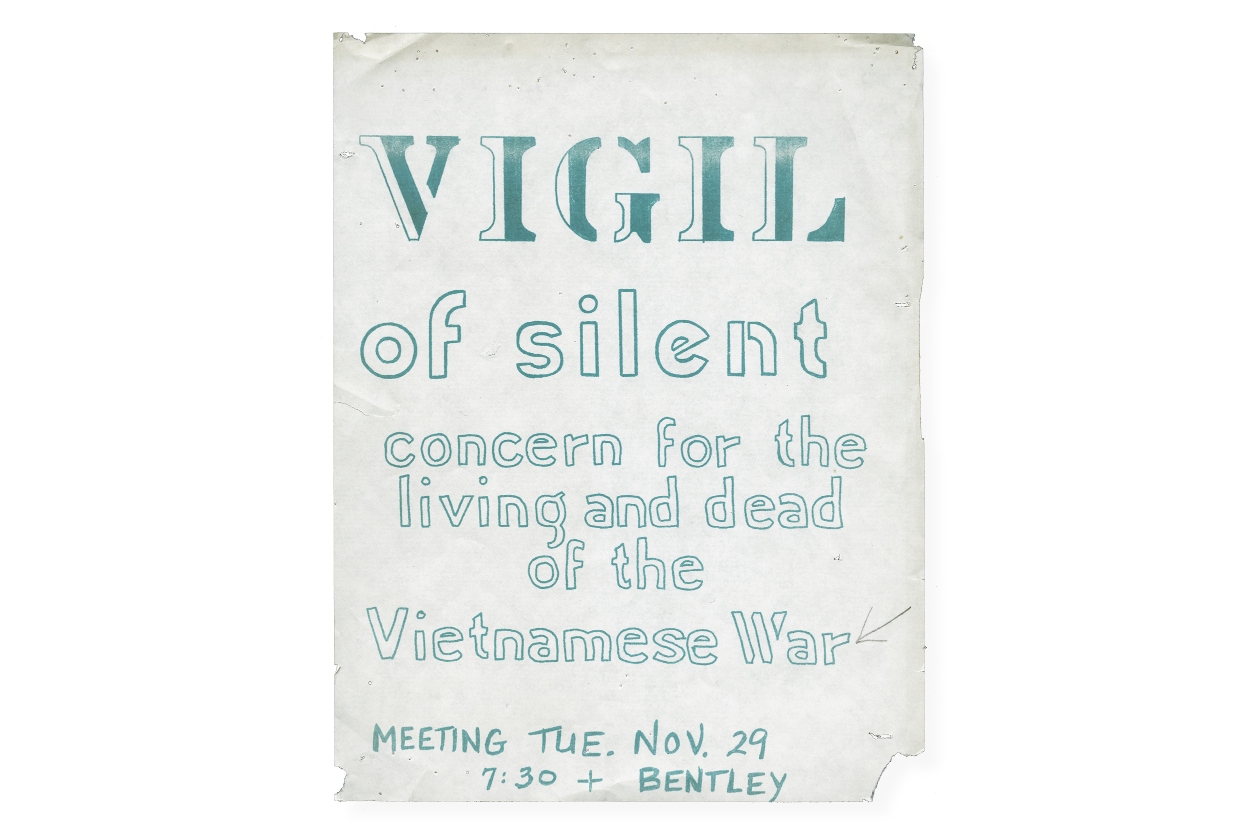
1969 | November 20
My Lai Massacre photos published
Photos taken in March 1968 by OHIO alumnus Ronald Haeberle, BFA ’69, documenting the killing of hundreds of unarmed Vietnamese civilians by U.S. troops are published in The Cleveland Plain Dealer, fueling the anti-war movement.
PHOTO COURTESY OF THE MAHN ARCHIVES & SPECIAL COLLECTIONS
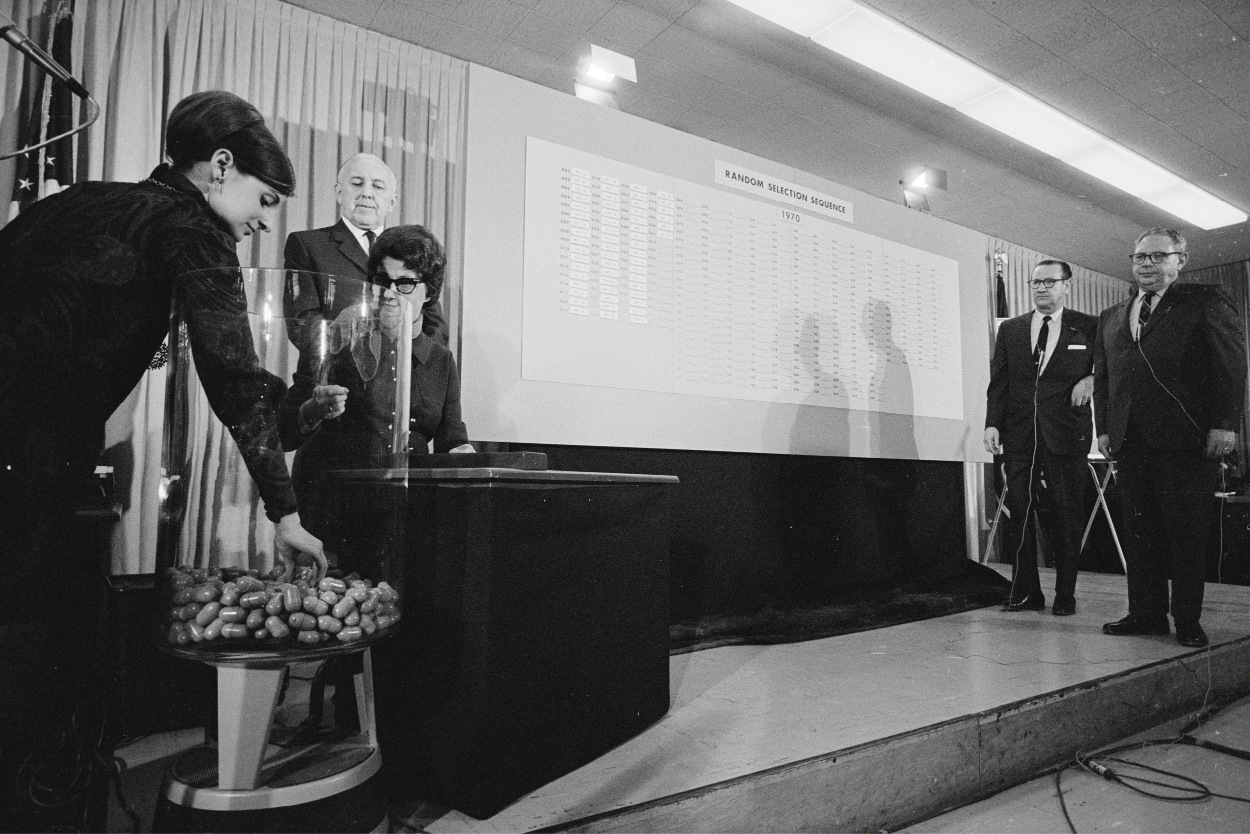
1969 | December 1
Draft lottery held
The random draft lottery based on birthdate is established to increase the number of available draftees, as well as address perceived inequities in the system. However, the change builds further sentiment against the draft.
U.S. NEWS & WORLD REPORT MAGAZINE PHOTOGRAPH COLLECTION (LIBRARY OF CONGRESS)
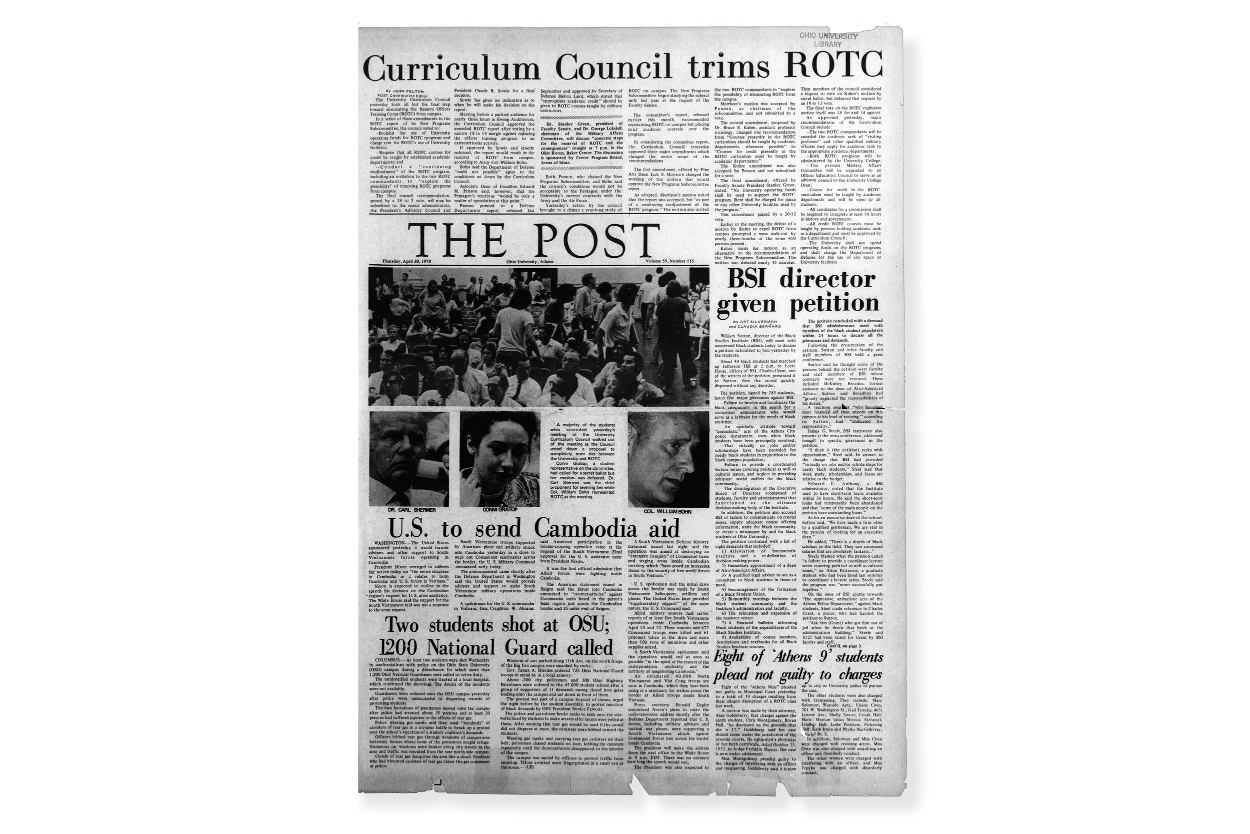
1970 | April 30
Expansion into Cambodia
President Nixon announces that U.S. troops have been authorized to enter Cambodia, news that sparks protest from inside the White House, from which numerous top officials resign, to college campuses, which see a new wave of anti-war protests nationwide.
PHOTO COURTESY OF THE MAHN ARCHIVES & SPECIAL COLLECTIONS
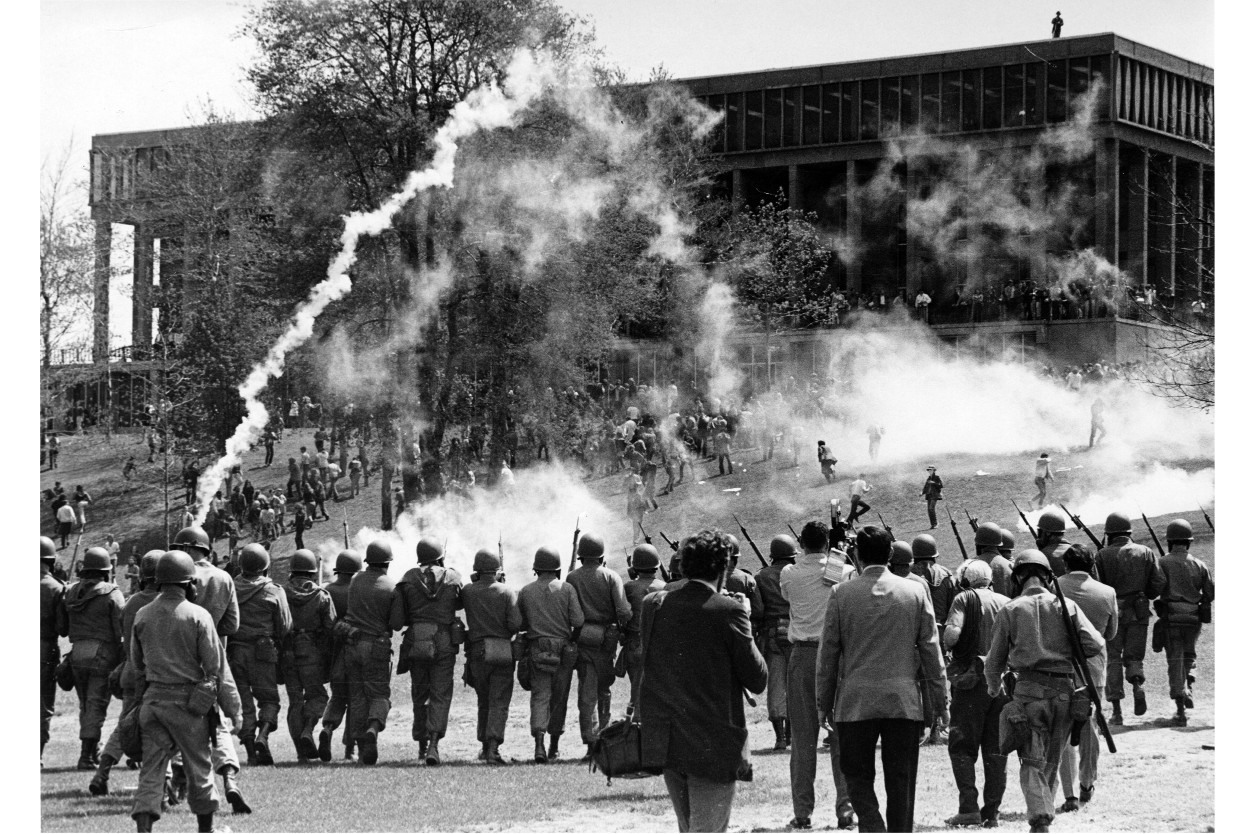
1970 | May 4
OHIO response to Kent State shootings
On campus in response to an anti-war demonstration, the Ohio National Guard opens fire on a crowd at Kent State University protesting the Vietnam War, killing four students and injuring nine. The shootings further fuel college protests around the state and nation.
In Athens, a crowd of approximately 3,000 OHIO students meet on College Green to discuss a two-day student strike. Any student who could not afford to miss class to support the strike would wear a red armband in solidarity.
MAY 4 COLLECTION, KENT STATE UNIVERSITY LIBRARIES, SPECIAL COLLECTIONS & ARCHIVES
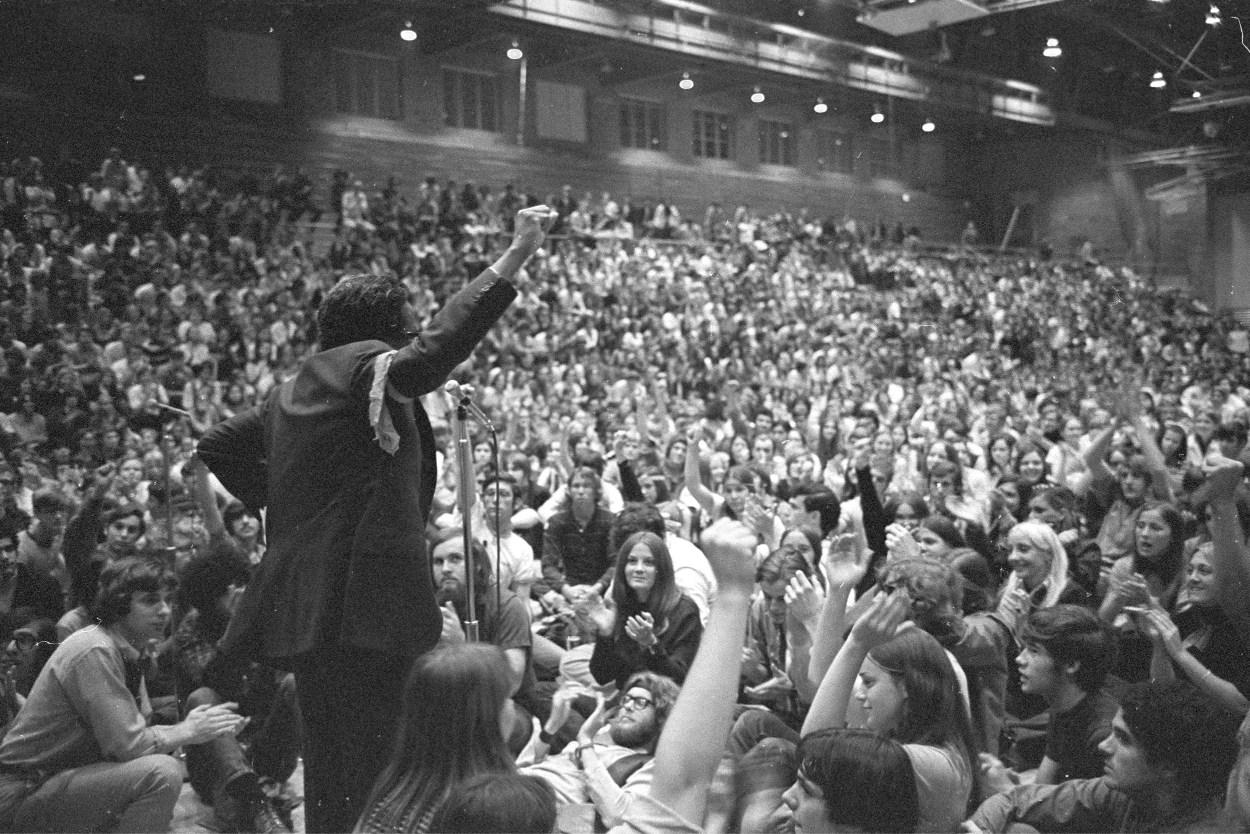
1970 | May 5
OHIO President Claude Sowle keeps the University open, wearing a red armband to signal solidarity at the students’ request. Sowle and the Faculty Senate work to protect the students who chose to strike by urging instructors against the penalization of students who did not go to class.
PHOTO COURTESY OF THE MAHN ARCHIVES & SPECIAL COLLECTIONS
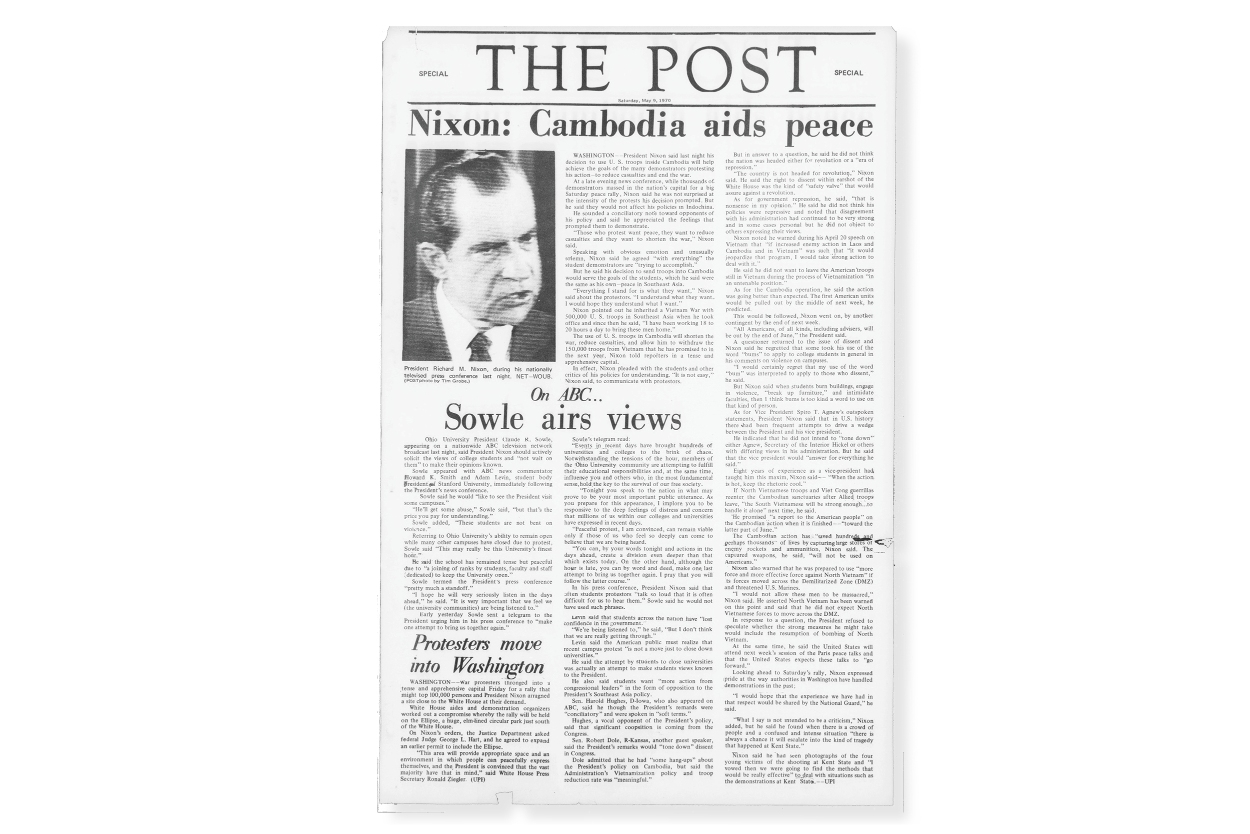
1970 | May 8
President Sowle appears on a nationally televised ABC broadcast and urges President Nixon to visit college campuses and hear the opinions of young people across the country. “He’ll get some abuse, but that’s the price you pay for understanding,” Sowle said. “These students are not bent on violence ... This may really be this University’s finest hour.”
PHOTO COURTESY OF THE MAHN ARCHIVES & SPECIAL COLLECTIONS
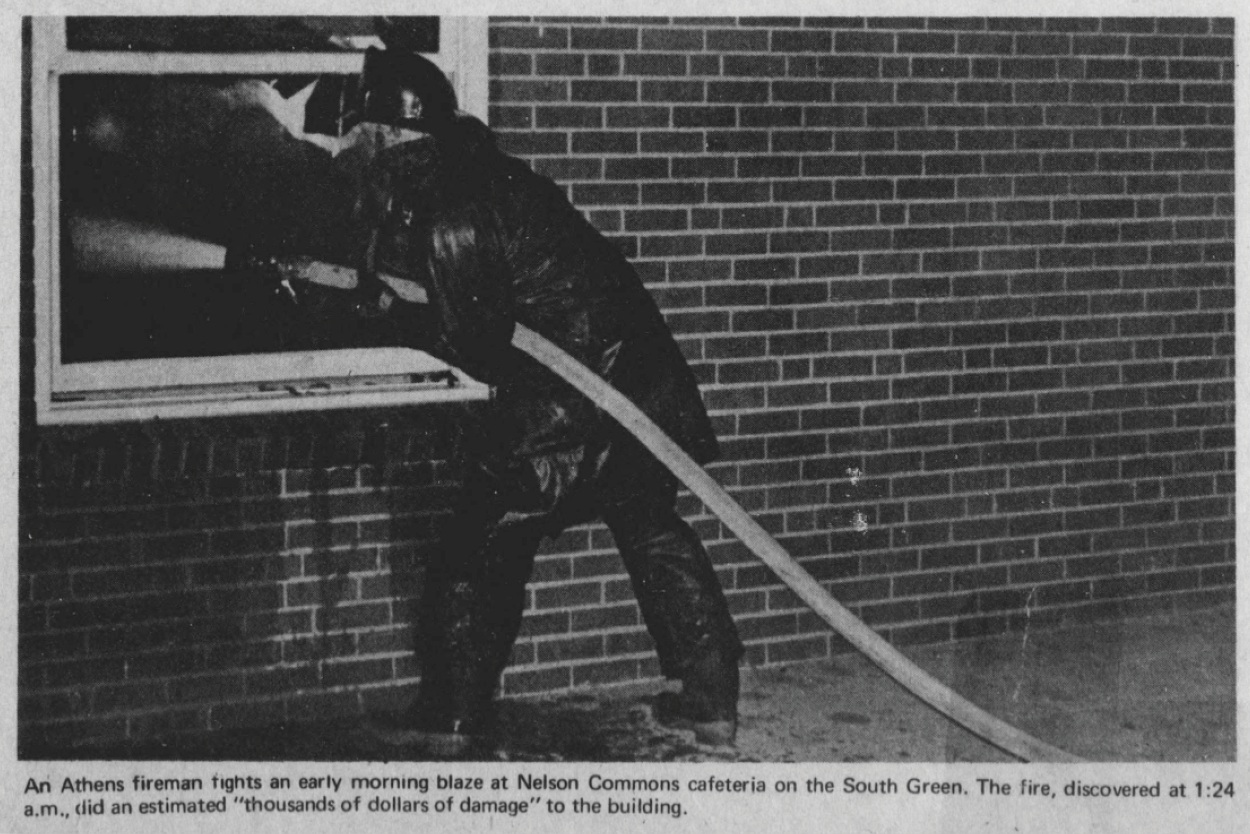
1970 | May 12
In the early morning hours, two fires erupt on South Green, one set in Nelson Commons, leaving more than $100,000 in damages. Throughout the day, dormitories, campus buildings, and private businesses experience false bomb threats and fire alarms. Dormitories hold resident meetings to establish precautionary measures in the case of a fire or bomb threat and new security requirements for entering the buildings.
PHOTO COURTESY OF THE MAHN ARCHIVES & SPECIAL COLLECTIONS
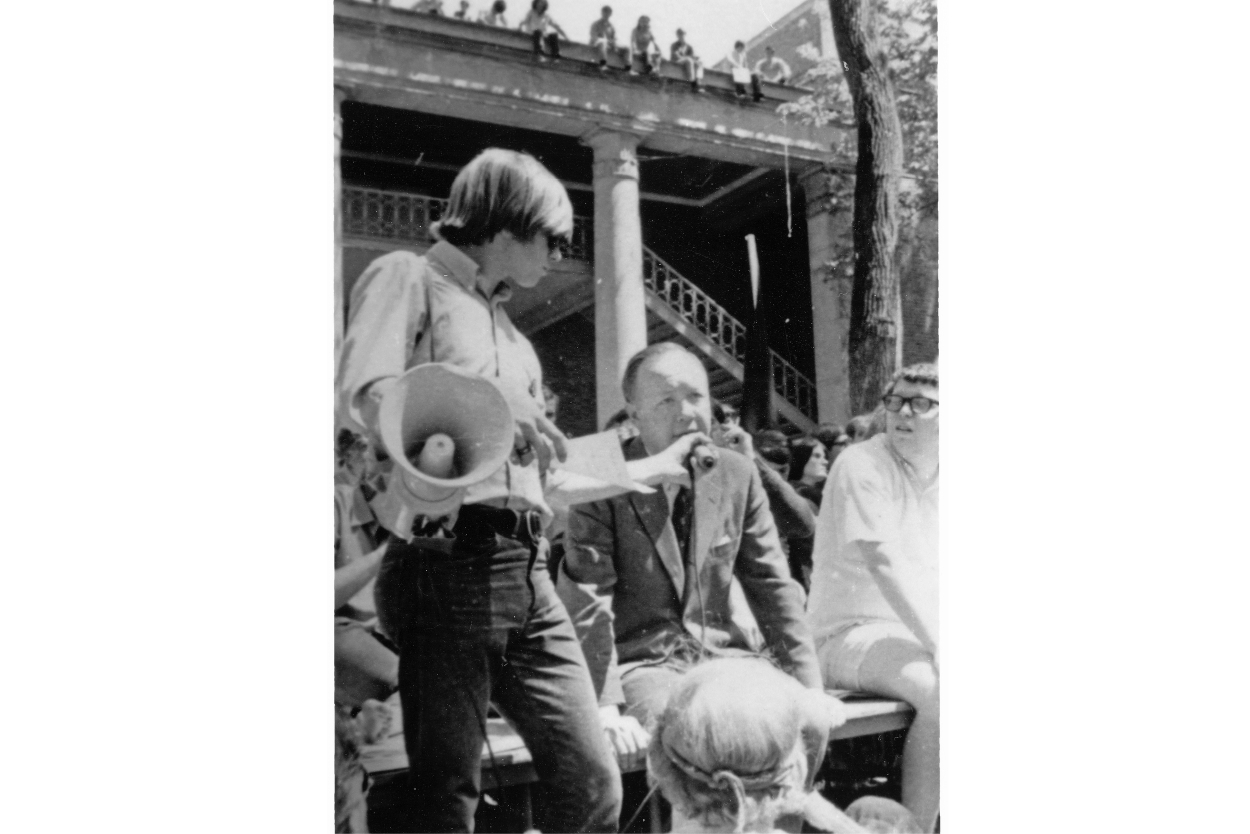
1970 | May 13
A quiet morning gives way to a march by students across campus, which sours by 11 p.m. Agitated protesters assemble on College Green, where a rock is thrown at Cutler Hall. President Sowle interrupts a phone interview with WOUB to attempt a short-lived address to the students. Students make their way to Alumni Gateway, where Athens Police, along with reinforcements from Belpre and Logan, have sealed off access to Uptown. After midnight, protesters begin throwing rocks and bricks at the police. Police retaliate with tear gas.
PHOTO COURTESY OF THE MAHN ARCHIVES & SPECIAL COLLECTIONS
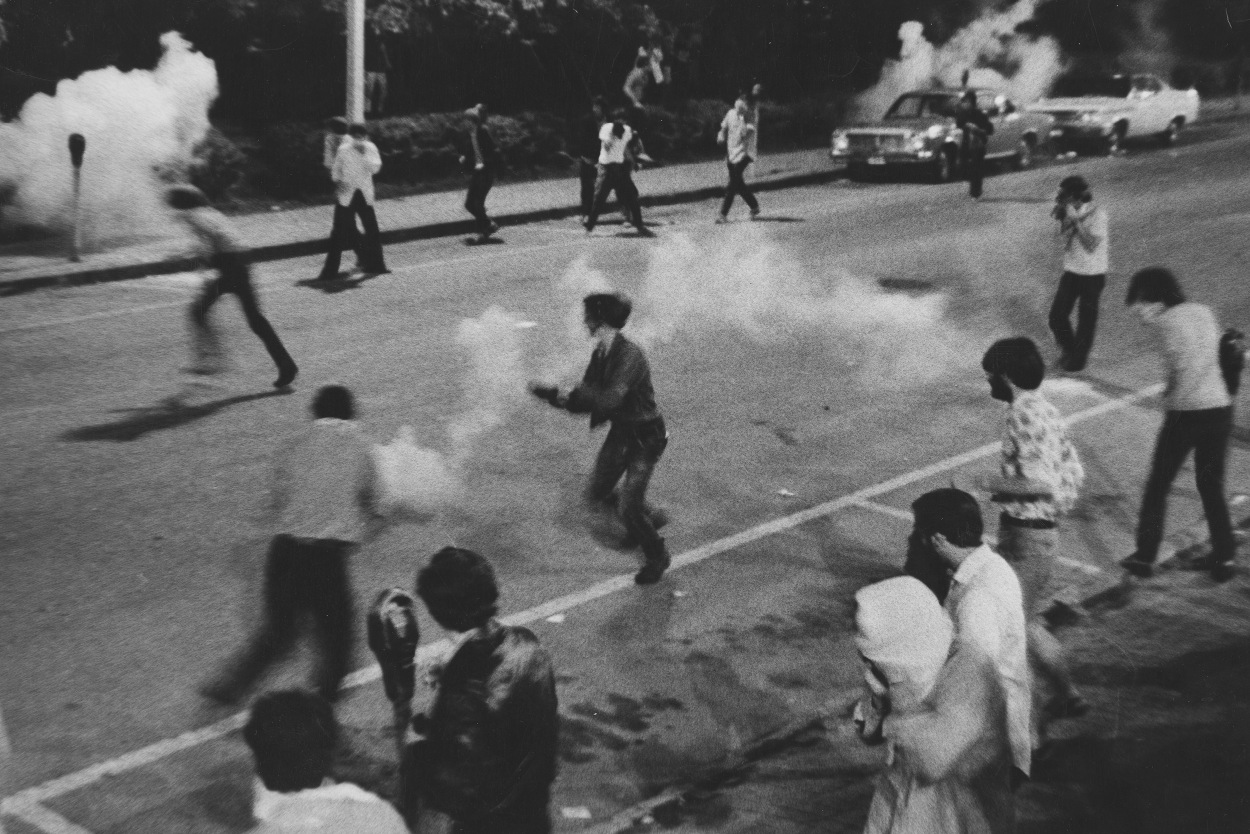
1970 | May 14
More than 1,300 students gather on College Green. Tensions build to a 90-minute clash with police, with protesters throwing rocks, bricks, and bottles at both police and surrounding buildings. Police dispense tear gas to disperse the crowd.
State Highway Patrol blocks entrances to Athens in an attempt to keep outsiders from entering the conflict. By the time the incident was over, 1,500 Ohio National Guardsmen are reported to be entering Athens.
PHOTO COURTESY OF THE MAHN ARCHIVES & SPECIAL COLLECTIONS
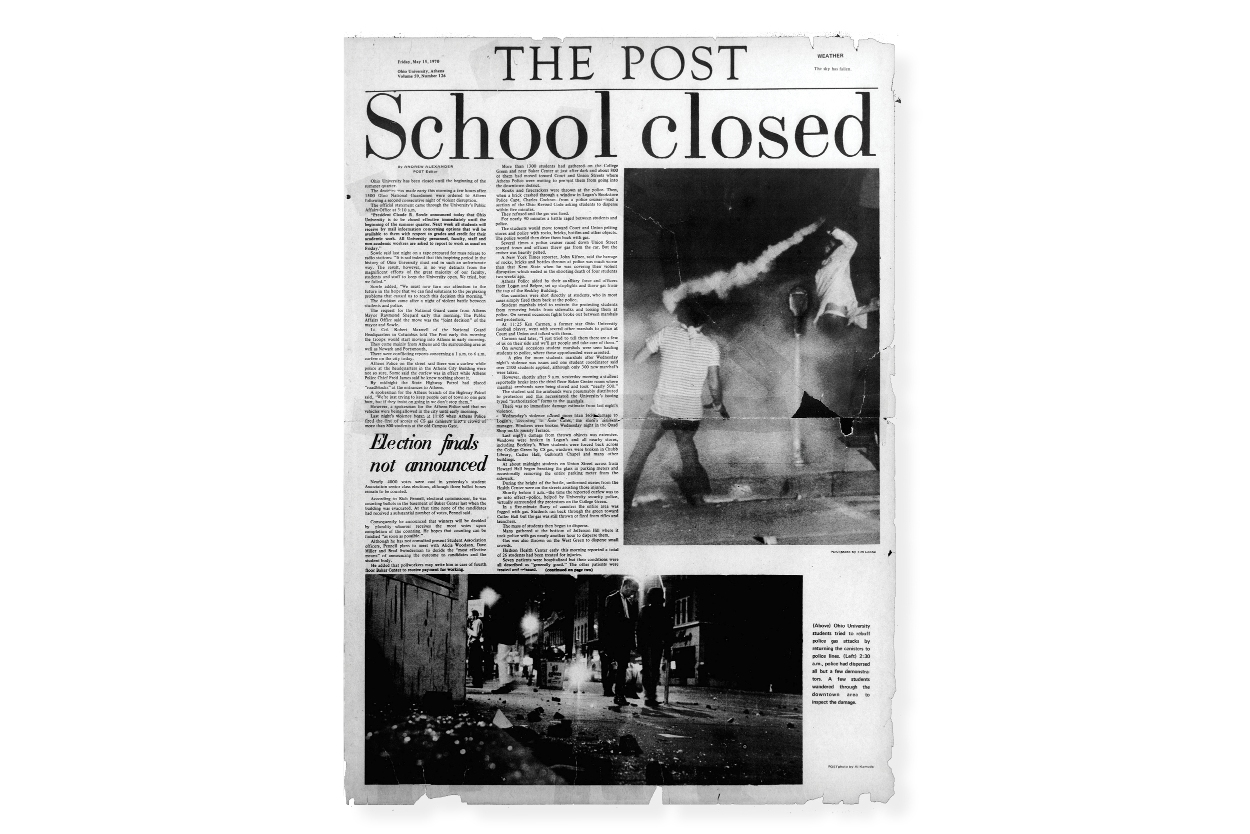
1970 | May 15
At 3:10 a.m., President Sowle announces that the University will close until the beginning of the summer quarter.
“President Claude R. Sowle announced today that Ohio University is to be closed effective immediately until the beginning of the summer quarter. Next week all students will receive by mail information concerning options that will be available to them with respect to grades and credit for their academic work. All university personnel, faculty, staff and non-academic workers are asked to report to work as usual on Friday.”
PHOTO COURTESY OF THE MAHN ARCHIVES & SPECIAL COLLECTIONS
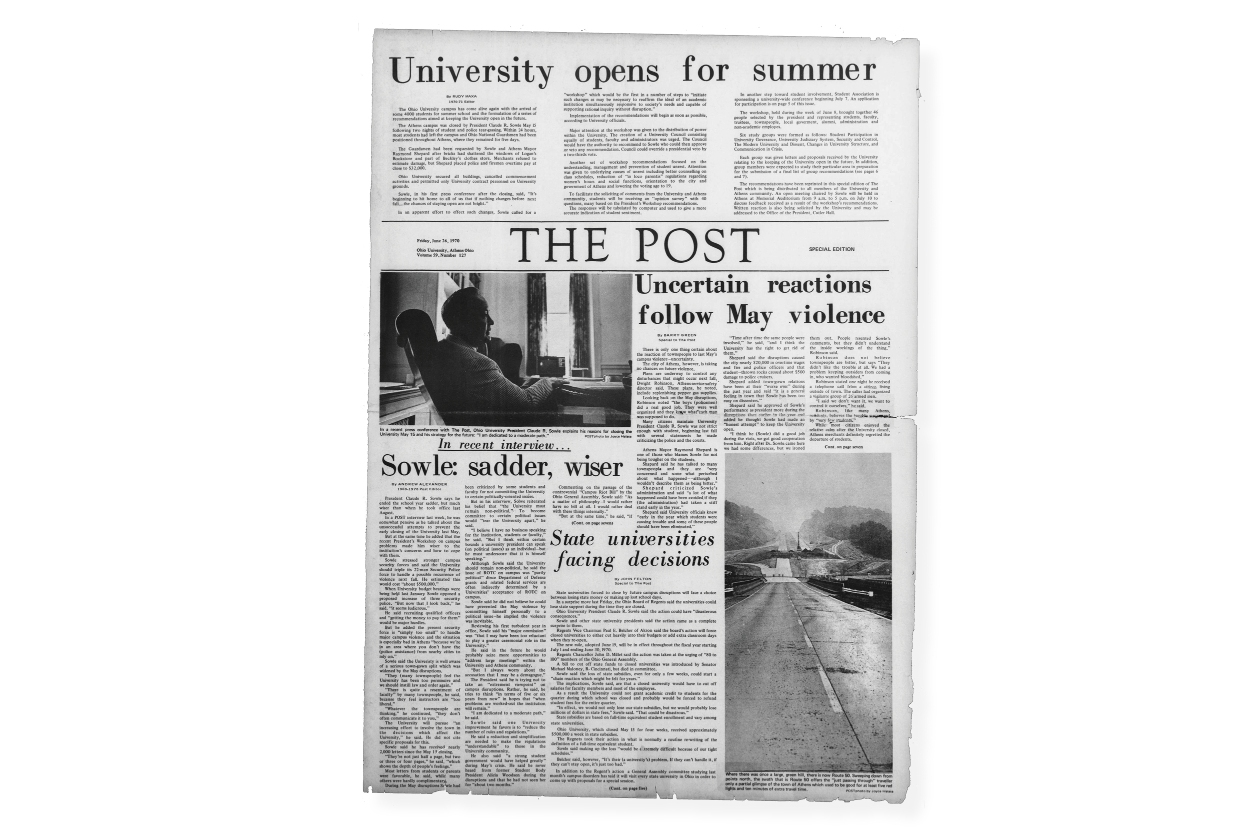
1970 | June 26
The Post releases a special edition, its first publication since the University’s closing on May 15, 1970. Its top story, “University opens for summer,” notes that approximately 4,000 students were returning to campus for summer classes.
PHOTO COURTESY OF THE MAHN ARCHIVES & SPECIAL COLLECTIONS
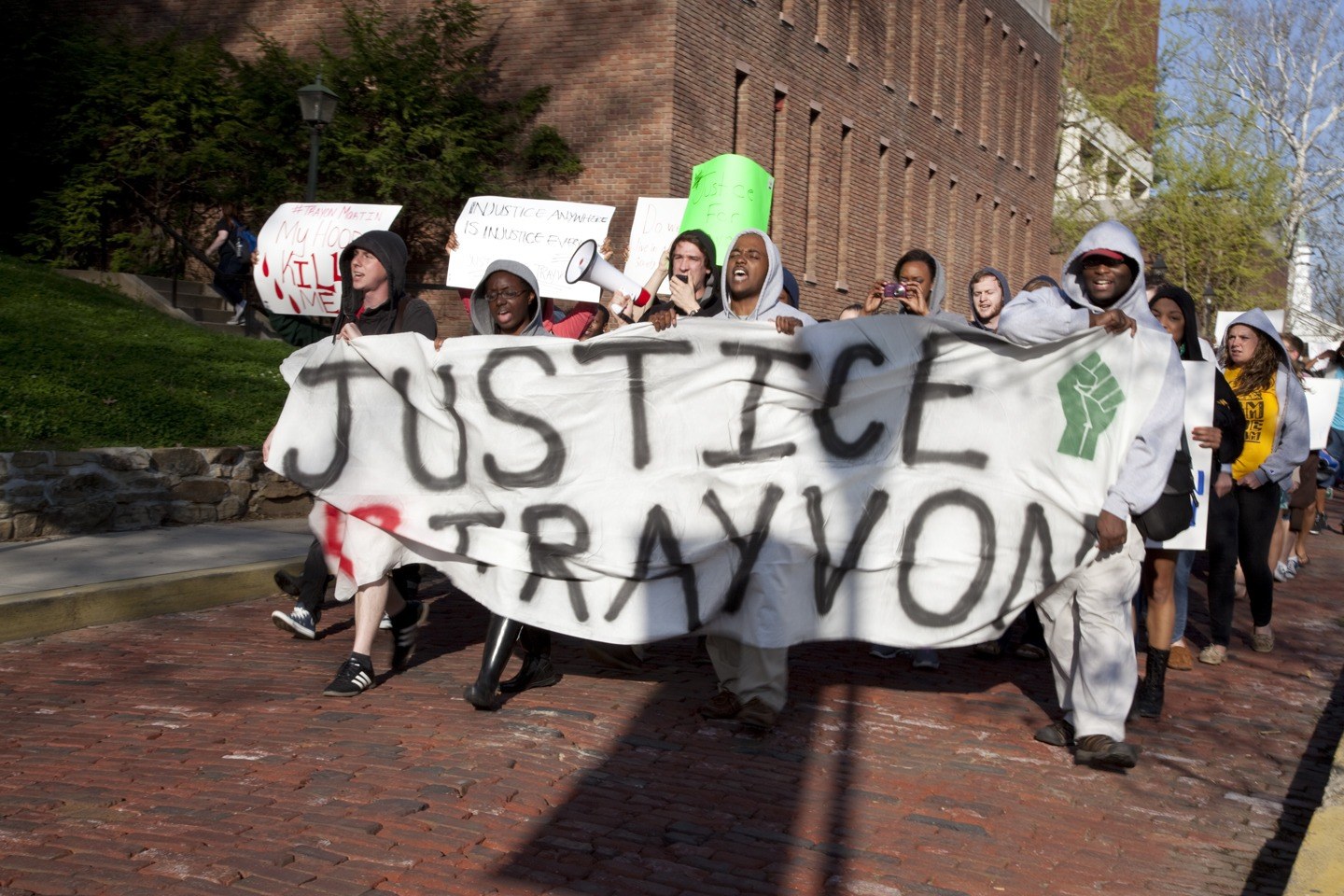
Protesters march through campus after the rally for Trayvon Martin, 2012
As part of Ohio University’s virtual Homecoming 2020 festivities, University Libraries is taking a look back at the history of student expression at OHIO—and the University administration’s reaction to it over the years.
On Monday, Oct. 5, University Libraries will release on its YouTube channel a presentation by University Archivist Bill Kimok that explores that dynamic, dating all the way back to 1812 when the OHIO Board of Trustees passed the University’s very first resolutions governing student behavior. All are invited to watch that presentation at their leisure and then tune in online at 7 p.m. Thursday, Oct. 8, for a short highlight of the presentation, followed by a live question-and-answer session with Kimok and Erin Wilson, digital imaging specialist. This online event is free and open to all.


